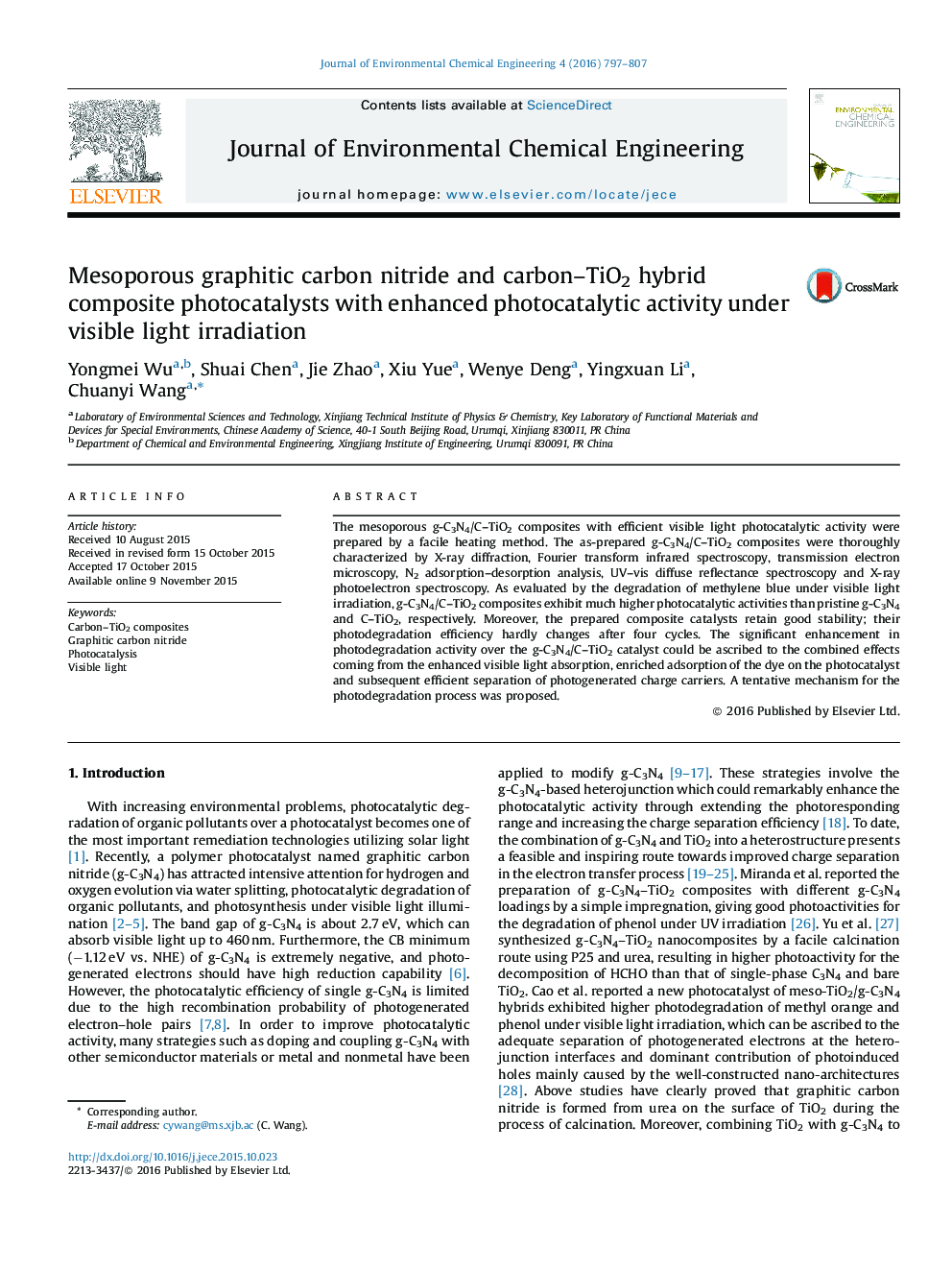| Article ID | Journal | Published Year | Pages | File Type |
|---|---|---|---|---|
| 221933 | Journal of Environmental Chemical Engineering | 2016 | 11 Pages |
The mesoporous g-C3N4/C–TiO2 composites with efficient visible light photocatalytic activity were prepared by a facile heating method. The as-prepared g-C3N4/C–TiO2 composites were thoroughly characterized by X-ray diffraction, Fourier transform infrared spectroscopy, transmission electron microscopy, N2 adsorption–desorption analysis, UV–vis diffuse reflectance spectroscopy and X-ray photoelectron spectroscopy. As evaluated by the degradation of methylene blue under visible light irradiation, g-C3N4/C–TiO2 composites exhibit much higher photocatalytic activities than pristine g-C3N4 and C–TiO2, respectively. Moreover, the prepared composite catalysts retain good stability; their photodegradation efficiency hardly changes after four cycles. The significant enhancement in photodegradation activity over the g-C3N4/C–TiO2 catalyst could be ascribed to the combined effects coming from the enhanced visible light absorption, enriched adsorption of the dye on the photocatalyst and subsequent efficient separation of photogenerated charge carriers. A tentative mechanism for the photodegradation process was proposed.
Graphical abstractFigure optionsDownload full-size imageDownload as PowerPoint slide
